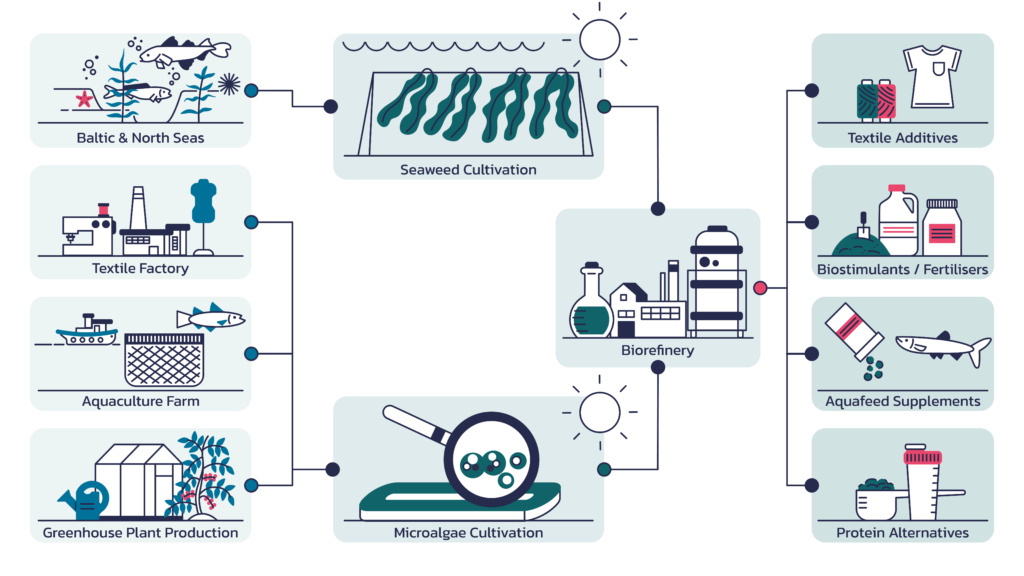Our concept
The main objective of LOCALITY is to develop circular and sustainable value chains, linking industrial players to stimulate co-creation and bring new and innovative algae-based products to regional and global markets while protecting and restoring Europe’s aquatic ecosystems.
LOCALITY sets the basis for the market uptake of innovative, socially responsible, and sustainable food, aquafeed ingredients, agriculture, and textile products formulated using algal biomasses and ingredients from side streams and the Baltic and North Seas, demonstrate their social and economic benefits, define commercialisation strategies and ensure consumer and market acceptance. Project results, developed technologies, and products to relevant stakeholders, thus fostering the replication of such circular ecosystems are disseminated.
LOCALITY is based on novel approaches and innovative products involving local stakeholders and international markets. The Consortium is completely market-oriented, with industrial partners addressing all value chains. Value chain reinforcement, consumer perception and acceptance, regulatory and technological barriers surpassing, business models, and market strategy development are key LOCALITY components. The designed products will gain a strong position in the European marketplace in the coming years.
Sustainability
In times of increasing environmental awareness, using wild harvested or cultivated algae, as an alternative to animal-based feedstocks, represents a major opportunity for the circular economy, new business models and as a valuable ingredient in a wide-range of products. At the same time, theses circular business models bring innovative solutions to restore Europe’s seas and oceans from domestic and industrial wastewater management, while uptaking nutrients and contributing to a carbon-neutral Europe.
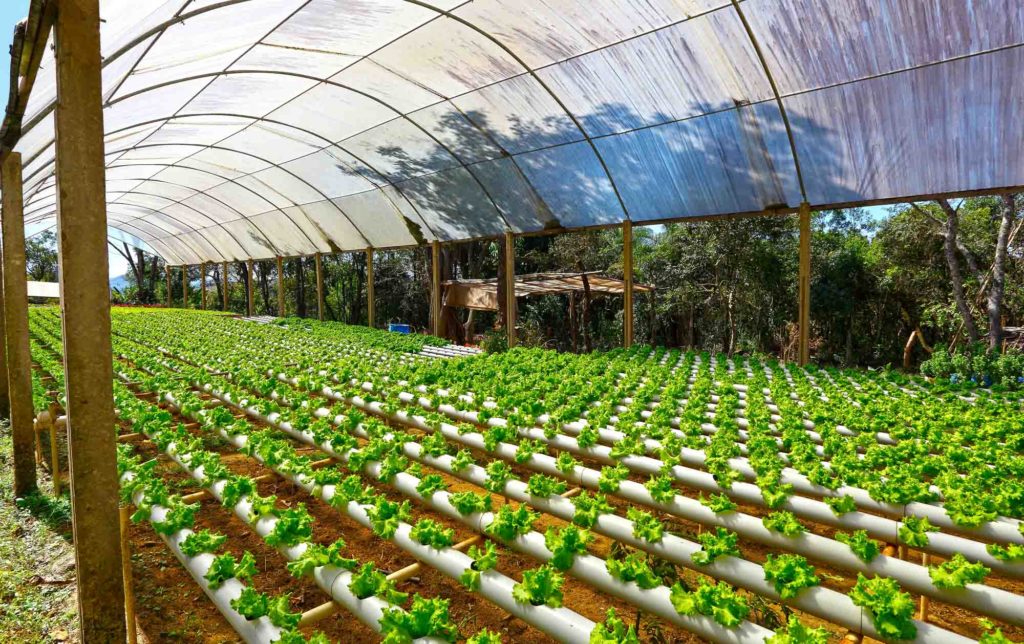
Industrial Circular Ecosystems
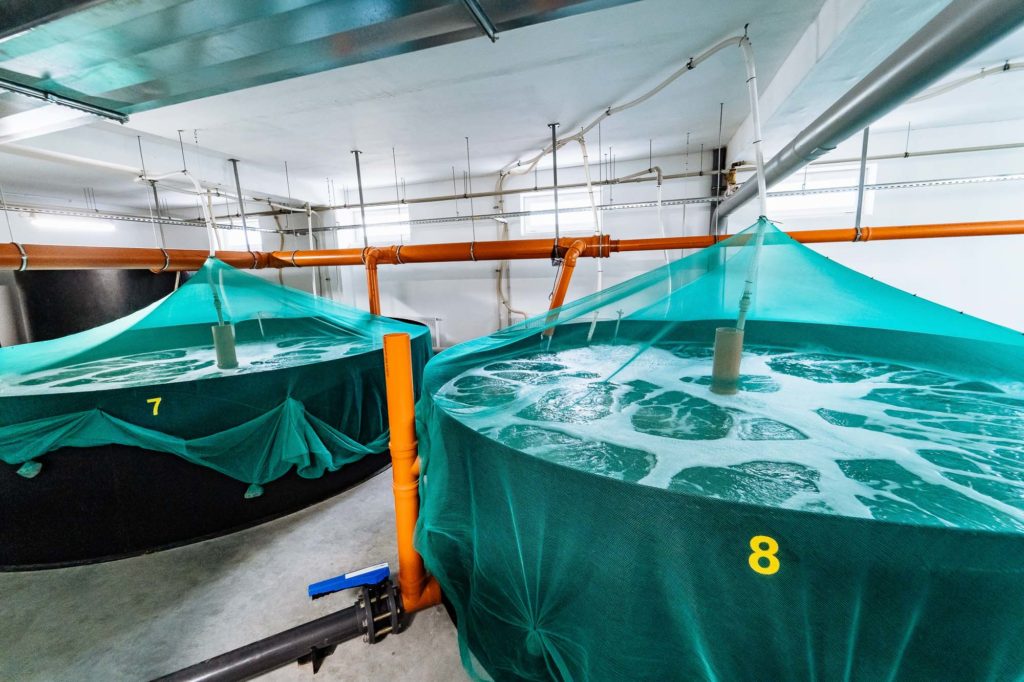
LOCALITY tackles the need to improve the sustainability of algal cultivation by re-cycling nutrients from industries, scaling up production, broadening algae-based product portfolios, and providing ecosystem services by removing nutrients from natural water bodies. The side stream supplying industries integrating the North Sea greenhouse and Nordic aquaculture ecosystems has long identified algae as a solution for nutrient depletion.
The Baltic textile ecosystem will be boosted by the expertise collected throughout the years on algae cultivation for water treatment. Therefore, creative cooperation is essential during project execution to successfully achieve the proposed results, products and solutions. The partners strongly rely on work previously developed within the consortium while implementing other projects and concepts.
Process
LOCALITY proposes to create algae-based ecosystems using side streams of agriculture, fish, and textile industries in countries bordering the Baltic and North Seas to produce biomass used as a base for sustainable algal products targeting the same market segments. This closing-the-loop concept benefits from nutrient-rich side streams of agriculture, fish, and textile industries, reducing costs for the culture medium needed for algal production. Additionally, seaweed grown in the North and Baltic Seas will be included as biomass for product development, removing nutrients from eutrophicated waters and providing an environmental service.
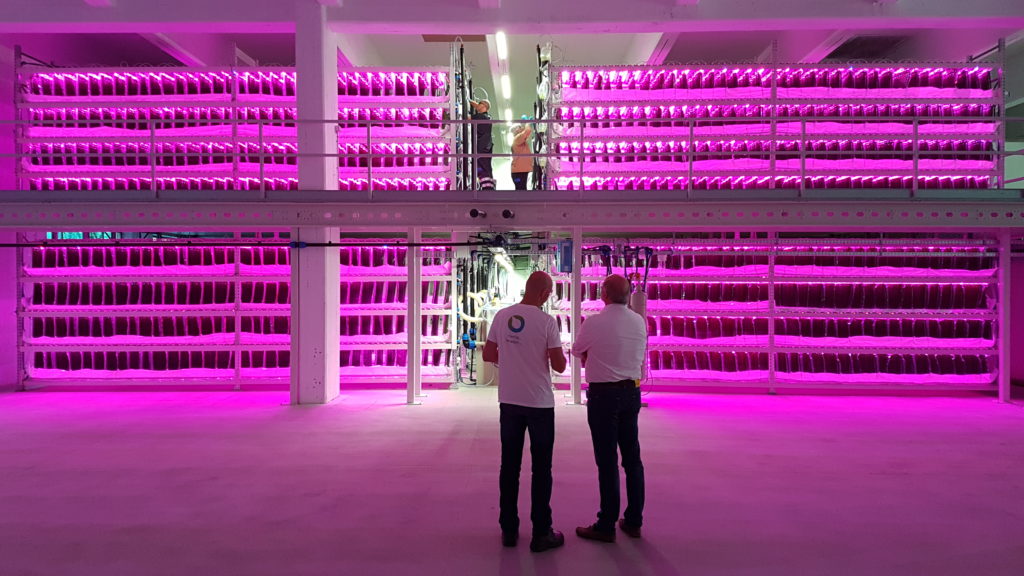
Products
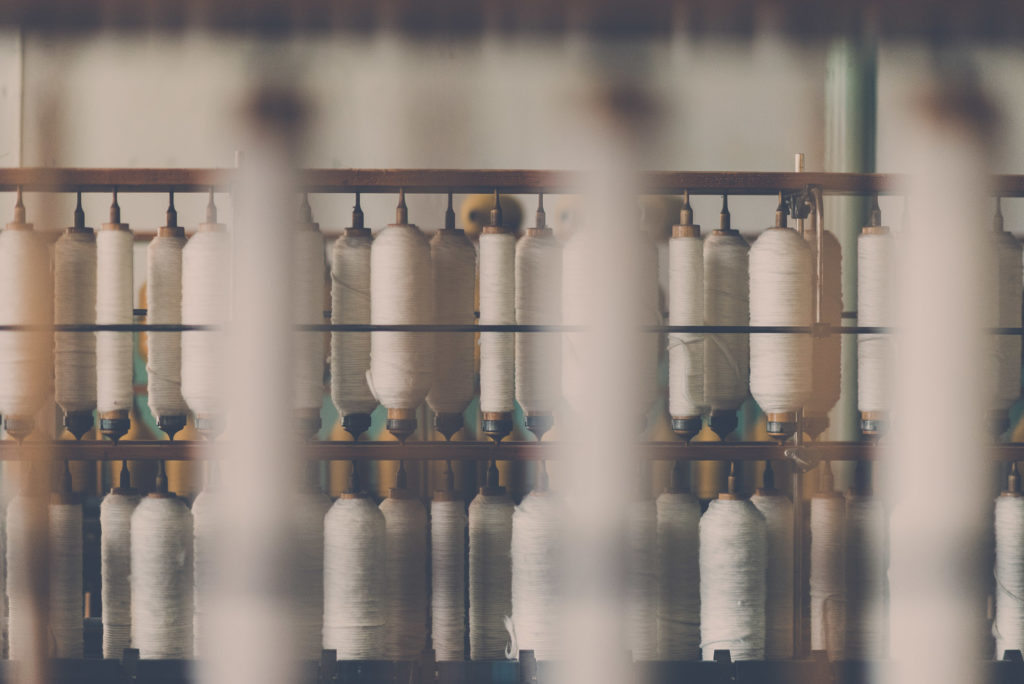
In times of increasing environmental awareness, using wild harvested or cultivated algae, as an alternative to animal-based feedstocks, represents a major opportunity for the circular economy, new business models and as a valuable ingredient in a wide-range of products.
The algae sector can produce biomasses in many ways and deliver innovative products and ecological solutions, which have the potential to address societal challenges like climate change, environmental degradation, and food and land scarcity. Algae biomass can also support the sustainability and security of food and feed systems and economic circularity.
In LOCALITY, we produce algae-based food, feed for aquaculture, biofertilizers, nutrients/biostimulants, nutraceuticals, natural dyes, and textile additives.
